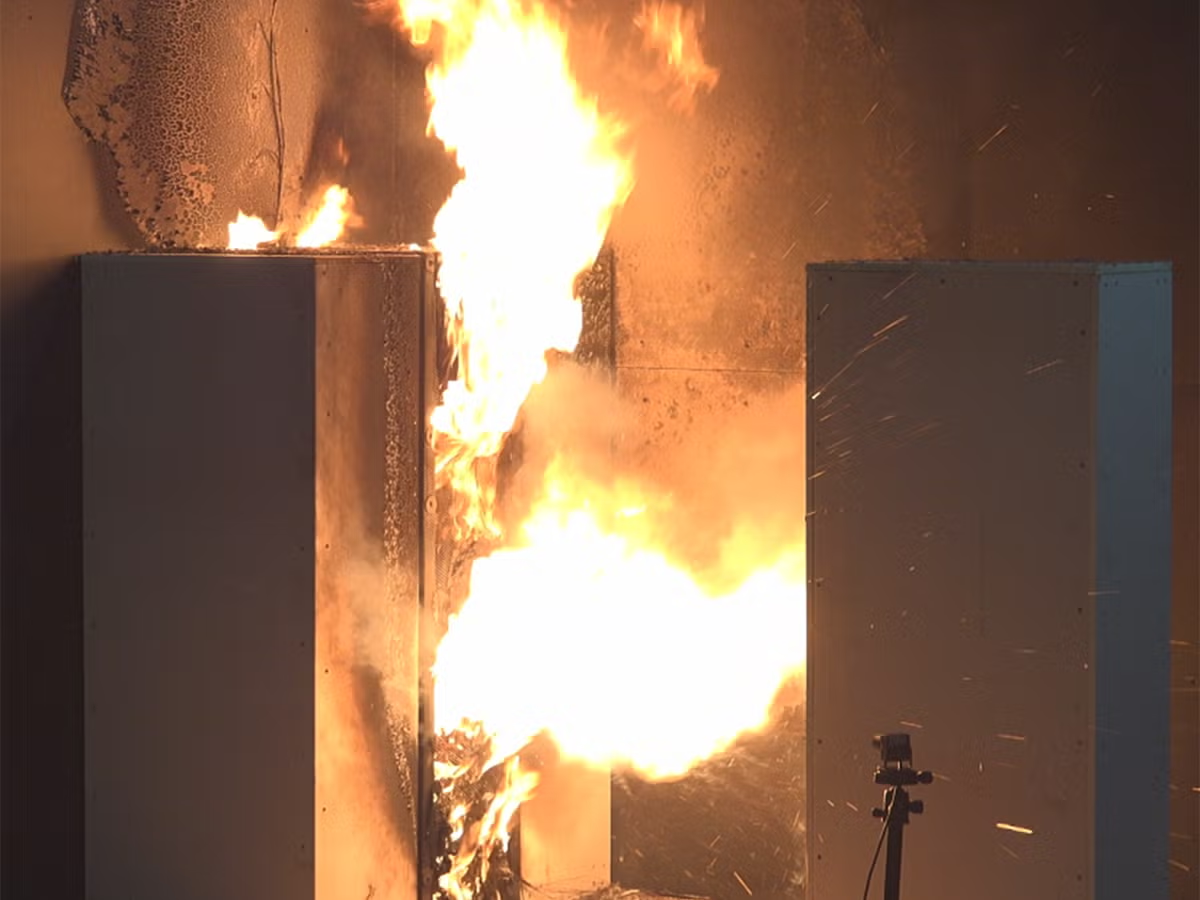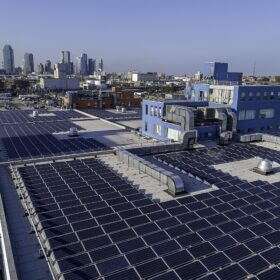UL Solutions, a global safety science organization, announced it updated its testing methods for battery energy storage systems to include new test methods for non-lithium-ion battery chemistries, such as sodium-ion.
UL 9540A provides a standardized test method to determine a battery technology’s susceptibility to thermal runaway, a chemical reaction that causes a battery to rapidly increase in temperature and pressure. Thermal runaway can lead to significant safety issues, such as fire and explosions, UL said. The test method also evaluates fire and explosion hazards due to thermal runaway, such as the ejection of hot particles.
Since battery energy storage systems were first deployed a decade ago, UL Solutions has been addressing the associated fire safety concerns by working with fire protection and battery experts, original equipment manufacturers, code authorities, and other key stakeholders to enhance the test methods for evaluating thermal runaway fire propagation in battery energy storage systems.
The new test methods reflect the updates from the fifth edition of UL 9540A, Test Method for Evaluating Thermal Runaway Fire Propagation in Battery Energy Storage Systems, which was released last month.
After units are tested, UL provides a report with the data that was used to determine the necessary fire and explosion protection necessary for the battery energy storage system.
UL said its latest edition of UL 9540A was updated to include a clearer criteria for cell-to-cell propagation, high-temperature test methods for various battery chemistries and testing protocols for emerging applications, such as rooftop and open-garage battery energy storage installations.
UL 9540A contains four testing levels for thermal runaway propagation in energy storage systems:
- Cell-level test: evaluates the thermal runaway characteristics of the cell as well as the composition and flammability of the gases.
- Module-level test: evaluates the tendency of cell thermal runaway propagation, the heat and gas release rate of the module, and the potential danger of ignition or deflagration.
- Unit-level test: evaluates the likelihood of fire spread between modules, the unit’s heat and gas release rates, and the potential for deflagration or re-ignition.
- Installation-level test: evaluates the effectiveness of the fire protection system, as well as the heat and gas release rate of the system and the danger of deflagration or re-ignition.
“The rapid integration of energy storage across all sectors demands unwavering focus on mitigating fire and explosion risks and close engagement with industry, regulators and other experts,” said Ken Boyce, vice president of Principal Engineering at UL Solutions.
First developed in 2017, UL 9540A and its adjacent UL 9540 are the energy storage industry’s safety benchmarks. Designed to work in concert with UL 9540 and UL 9540A, UL released a new test protocol last year, UL 9540B, Outline of Investigation for Large-Scale Fire Test for Residential Battery Energy Storage Systems, which provides large-scale fire testing for energy storage systems used in residential applications.
UL said it is currently developing large-scale fire testing methodologies in collaboration with the National Fire Protection Association (NFPA) Technical Committee.
This content is protected by copyright and may not be reused. If you want to cooperate with us and would like to reuse some of our content, please contact: editors@pv-magazine.com.









By submitting this form you agree to pv magazine using your data for the purposes of publishing your comment.
Your personal data will only be disclosed or otherwise transmitted to third parties for the purposes of spam filtering or if this is necessary for technical maintenance of the website. Any other transfer to third parties will not take place unless this is justified on the basis of applicable data protection regulations or if pv magazine is legally obliged to do so.
You may revoke this consent at any time with effect for the future, in which case your personal data will be deleted immediately. Otherwise, your data will be deleted if pv magazine has processed your request or the purpose of data storage is fulfilled.
Further information on data privacy can be found in our Data Protection Policy.